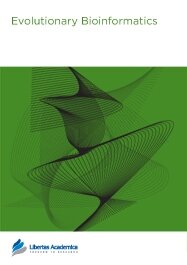

Publication Date: 11 Jun 2012
Type: Short Report
Journal: Evolutionary Bioinformatics
Citation: Evolutionary Bioinformatics 2012:8 261-269
doi: 10.4137/EBO.S9738

Serially-sampled nucleotide sequences can be used to infer demographic history of evolving viral populations. The shape of a phylogenetic tree often reflects the interplay between evolutionary and ecological processes. Several approaches exist to analyze the topology and traits of a phylogenetic tree, by means of tree balance, branching patterns and comparative properties. The temporal clustering (TC) statistic is a new topological measure, based on ancestral character reconstruction, which characterizes the temporal structure of a phylogeny. Here, PhyloTempo is the first implementation of the TC in the R language, integrating several other topological measures in a user-friendly graphical framework. The comparison of the TC statistic with other measures provides multifaceted insights on the dynamic processes shaping the evolution of pathogenic viruses. The features and applicability of PhyloTempo were tested on serially-sampled intra-host human and simian immunodeficiency virus population data sets. PhyloTempo is distributed under the GNU general public license at https://sourceforge.net/projects/phylotempo/.
PDF (1.02 MB PDF FORMAT)
RIS citation (ENDNOTE, REFERENCE MANAGER, PROCITE, REFWORKS)
BibTex citation (BIBDESK, LATEX)
XML
PMC HTML
My co-authors and I had a very positive experience with the review and publication process in Evolutionary Bioinformatics. The reviewers were rapid and on point, and publication was also rapid after we made the necessary revisions.

All authors are surveyed after their articles are published. Authors are asked to rate their experience in a variety of areas, and their responses help us to monitor our performance. Presented here are their responses in some key areas. No 'poor' or 'very poor' responses were received; these are represented in the 'other' category.See Our Results
Copyright © 2013 Libertas Academica Ltd (except open access articles and accompanying metadata and supplementary files.)
Facebook Google+ Twitter
Pinterest Tumblr YouTube